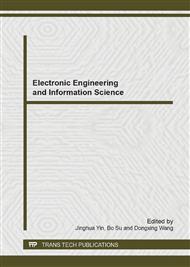p.909
p.914
p.918
p.923
p.927
p.932
p.936
p.940
p.946
Type Conversion of Undoped NiO Thin Films Fabricated by Electron Beam Evaporation Technique
Abstract:
As an important semiconductor, nickel oxide (NiO) films deposited by electron beam evaporation are reported scarcely. In this study, undoped NiO films were deposited on quartz by electron beam evaporation technique, and annealed at different temperature in a pure oxygen atmosphere. The electrical characterization of NiO films were investigated using Hall effect measurements. The results show that the film conduction types of n, p, and high resistivity appear in proper order with the increasing temperature. The mechanism is further explicated by the SEM and Raman measurements. The oxygen atoms are introduced by the thermal treatment under oxygen ambience. The amount of atoms is more and more with the increasing temperature and it results in becoming larger grain size of the film while the conduction type converting. High resistivity of the film reveals that some oxygen atoms will be out of the film at a higher annealing temperature. So the amount of oxygen atoms in the film plays a key role in the conduction behavior of NiO film. Our results provide important information for the improved understanding of the conduction mechanism.
Info:
Periodical:
Pages:
927-931
Citation:
Online since:
July 2014
Authors:
Keywords:
Price:
Сopyright:
© 2014 Trans Tech Publications Ltd. All Rights Reserved
Share:
Citation:


